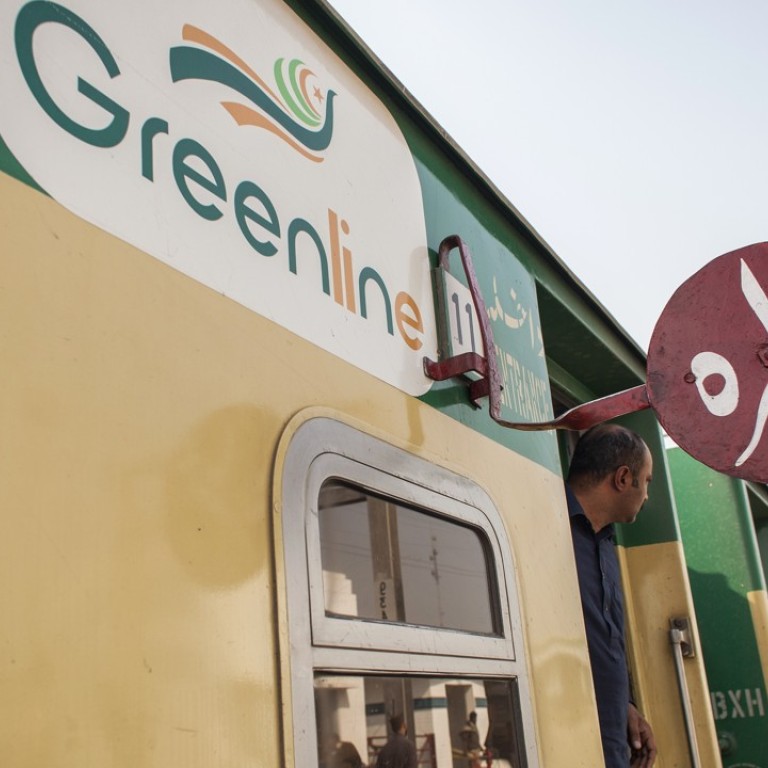
China’s Belt and Road Initiative needs upgrades to help heavily indebted partners, Standard Chartered says
- Belt and road projects need to be commercially viable, which is doable with better transparency and debt management
Debt relief by China can prevent financial crises in developing nations included in Beijing’s “Belt and Road Initiative”, but greater project transparency and better debt management are needed to boost the ambitious programme’s sustainability, according to Standard Chartered.
“China’s ability, and apparent willingness, to provide bilateral debt relief suggests a low risk of systemic debt fallout,” said Kelvin Lau Kin-heng, the Greater China senior economist at the bank, which derived about 41 per cent of its pre-tax underlying profit from Southeast and South Asia, the Middle East and Africa – the key markets of the initiative – in the year’s first half.
“However, we believe a more transparent BRI development framework and improved debt management are more sustainable ways to promote the BRI going forward ... Debt relief is inadequate recourse if countries involved in the BRI do not ensure that a project is commercially viable.”
He said increased transparency, through establishing a comprehensive belt and road development framework, open and fair procurement and land requisition processes, disclosure of debt pricing and other contractual commitments, is key to enhancing projects’ commercial viability and the initiative’s sustainability.
President Xi Jinping initiated the ambitious project in 2013, with the aim of fostering closer trade and investment ties with 71 nations in Asia, Europe, Africa and Latin America, initially through mostly China-funded infrastructure projects.
Chinese banks have provided some US$200 billion of loans to fund more than 2,700 belt and road projects, according to its industrial policy setter, the National Development and Reform Commission.
Eight belt and road nations – Djibouti, the Kyrgyz Republic, Laos, the Maldives, Mongolia, Montenegro, Pakistan and Tajikistan – are highly vulnerable to debt distress, with their debt owed to China making up 44 to 91 per cent of their total public and public-guaranteed external debt, according to the Washington-based non-profit think tank Center for Global Development.
Of the eight nations, Pakistan is the most indebted to China, owing US$6.3 billion. It saw its foreign reserves plunge 42 per cent since the start of the year to US$8 billion, or less than two months of import cover, according to Reuters.
Saudi Arabia gave Pakistan a US$6 billion bailout package. But Pakistan may seek its 13th rescue plan since the late 1980s from the International Monetary Fund, and is in talks about obtaining economic aid from China, which expressed a willingness to provide support.

Pakistan’s currency, as well as that of its emerging market peers, plunged this year amid rising interest rates in the US, and it found itself in a worsening external trade position because of surging equipment imports from China to execute infrastructure projects. The country’s foreign exchange reserve shrunk while its finances costs grew.
Lau said he expects Ethiopia, Djibouti, Mozambique, Zambia and the Maldives to also see restructuring of their debt with China.
Carmen Ling, the bank’s global head of yuan internationalisation and belt and road, said rising participation by private entities through so-called public-private partnerships, and greater willingness of Chinese firms to consider investing and operating belt and road projects in addition to building them, will also help enhance sustainability via scrutiny by market forces.
The US-China trade war will also speed up relocation of supply chains by manufacturers from China to belt and road nations, helping to sustain the number of financing and advisory deals, despite the growing pains of the project, she added.
The number of belt and road deals Standard Chartered was involved in during the year’s first eight months already matched that of the whole of last year, Ling said.

